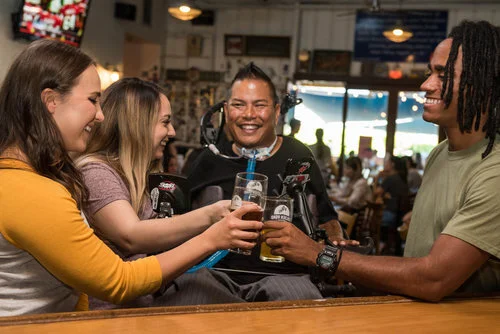Have Viral Stories Warped Pandemic Thinking?
The push to reopen America escalated as rapidly as the shutdown of America. Powerful stories played a role in both, but was that helpful?
Shutdowns: On January 23rd, the Chinese government issued lockdown orders in Wuhan. The news spread, magnified by horrific scenes coming from Italy. Americans recalled stories about other epidemics, especially the 1918 “Spanish Flu” and its scenes of crowded hospitals and dying patients. In more recent memory, images of the 2013 Ebola outbreak may have spiked COVID19 fears, as well as exposure to popular movies such as Contagion. Americans shared such stories, aided by social media. Fears grew. On February 26th, the first two U.S. coronavirus deaths were recorded. Just over a month later, by April 3rd, 44 states had closure orders.
In Narrative Economics, Nobel laureate Robert Shiller argued that ideas embedded in stories can spread contagiously, just like viruses, impacting economic behavior. The Great Depression, he noted, started with a two-day stock market crash, October 28-29, 1929, but half of that 21% drop was reversed on October 30th. Nevertheless, he suggests, Americans’ recalling and retelling stories of other financial panics fueled worries. That led to decreased spending leading which led to business failures, the loss of jobs, and an ever-weaker economy. Other narratives also worsened the Depression, he concluded, such as it being seen as another instance of divine retribution, in this case for the moral failings of the “roaring 20s”.
Reopening: On April 17th, the coronavirus death toll was 2,483, the third highest to that date. Yet that same day, President Trump sent “LIBERATE!” tweets, signaling his call for states to ease shutdown orders that had triggered widespread economic damage. On April 22nd, 2,845 people died, but the media had already shifted from covering hospitals and victims to covering anti-closure protests. Though epidemiologists warned about rapid reopening, a growing segment of the public showed less concern. An early May USA Today poll found 58 percent of Americans were still practicing some degree of social isolation, but that was down from 75% a month earlier. By the middle of May, all states had begun reopening. That effort, like the shutdown, had gone viral.
The president’s tweets connected for some with stories of Americans fighting for their rights. Street protests quickly followed, sporting such historically reminiscent signs as “Live Free or Die.” Demands for easing restrictions tapped into Americans’ historic anger at overbearing authority and distrust of government. Even movie stories were called upon, such as the promise of Star Wars type “warp speed” vaccine development. The “return to normal” narrative associated with past recessions, depressions and wars also resurfaced, sparking optimism and fueling demands for reopening.
The response to COVID19, drawing upon Shiller’s perspective, was thus shaped in part by two sets (Shiller calls them “constellations”) of reinforcing stories – one leading to shutdowns and the other to reopening. Like the pandemic itself, these narratives were “virally” transmitted from person to person, aided by social media, cable, the Internet, and “superspreaders” – people we look to for information and guidance. The impact of this can be below conscious awareness. Biological viruses are based on chemistry, but social contagions are anchored in psychology. Whether good decisions resulted is debatable. Since there will be future pandemics, we should confront some important question.
What stories delayed the initial U.S. response to COVID19 and why? Why did lockdowns then spread virally, with little time for careful thought and seemingly without asking such questions as whether the same approaches necessary for concentrations of people were appropriate for less densely populated locales? Could some shutdowns have been less severe, perhaps applying mitigation measures now used in reopening? What role did the media - print, broadcast, and social – play in spreading both helpful and harmful stories? What role should they play? What stories might have politicians told that could have led to more effective public responses?
What role did narratives play in the rush to reopen even as infections and deaths were rising and hardly any states had met government-recommended guidelines? How did stories anchored in political ideology play a role? A late April Pew Research Poll found 61 percent of conservative Republicans said state restrictions were not being lifted quickly enough, while 91 percent of liberal Democrats said they were being lifted too quickly. Reopening decisions in some states reflected the same “one-size-fits-all” approach for every city and county that lockdowns followed. How did narratives shape those decisions?
How emotionally-laden viral narratives will impact the rest of COVID19 and a possible second surge will depend to a degree on our awareness and management of them. Prudent policy requires effective stories anchored in facts.
“Facts are stubborn things; and whatever may be our wishes, our inclinations, or the dictates of our passion, they cannot alter the state of facts and evidence,” John Adams said in justifying his successful defense of innocent British soldiers against the powerful – and wrong - stories told by colonists after the “Boston Massacre” in 1770. Reason is not guaranteed to prevail. We must be mindful of the stories that shape our decisions – and choose those stories well.







